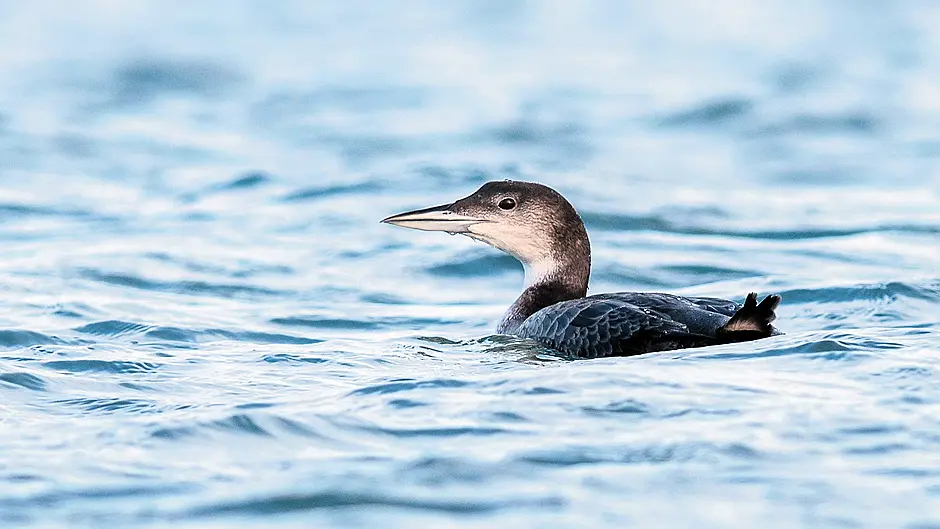There are so many new birds on the Lisheen shoreline these days – wigeons whistling across the bay, a variety of waders picking their way along the tide line, and elegant lapwing flying overhead.
But some new arrivals remain afloat, and the distinctive profile of one such bird floating off shore caught my eye recently – I was delighted to find that it was the beautiful great northern diver.
The great northern diver can be mistaken for a gannet at a distance, but it is a much larger and more powerfully-built bird with a heavy, spear like bill. It’s a winter migrant from Iceland, Greenland and North America and it can be seen all along the coast of West Cork from September to April.
This is the national bird of Canada, where it is known as a common loon and as such it features on the CAD$1 coin, which is referred to as a ‘loonie’.
Loon
The great northern diver is one of three loon species found in Ireland. While the term loon is used in North America, it owes its origin to Europe. It comes from the Scandinavian words for ‘lame’, a descriptor of the awkwardness of this bird on land. Its Irish name, ‘lóma mór’, translates as ‘big loon’.
Great northern divers are truly creatures of another realm and have an other-worldly cry which adds to their mystique. The loud, wailing call is often used in movie soundtracks to evoke a spooky atmosphere, and often featured in old Westerns based in the dessert, thousands of miles from the birds’ watery homeland. However, we are unlikely to hear this wonderful call in Ireland as it is a sound used on its northern breeding grounds.
These are birds of the water and are magnificently adapted for diving. Most birds’ bones are hollow but loons have some solid bones which add weight to help them dive.
However, it makes it harder for them to take off so they have to use a ‘runway’ along the water, flapping and skimming the water surface before being able to get airborne.
In much the same way as the prop and rudder are positioned in a boat for maximum effect, the feet of a great northern diver are at the very rear of its body. However, this makes them extremely awkward on land as they are only able to walk a few steps at a time. To travel any further, they have lie on their stomach and push themselves along with their legs.
This method of ungainly land propulsion gave rise to their derogatory name stateside.
A great northern diver can dive as deep as 60m and remain underwater for three minutes at a time. Its red eyes help it to see underwater and it also has nostril valves that can close when submerged. This is a bird that can also alter its buoyancy which enables it to submerge its body in the water with only the bill exposed.
The great northern diver is also a strong flyer, skimming just over the water and reaching speeds of up to 120km on migration.
Flamboyant
While we experience this bird in its winter dull dark grey/white plumage, in the breeding season it’s a much more flamboyant bird of glorious iridescent head colours and a chequer board-patterned back.
Great Northern Diver adults pair up to form a monogamous couple in their breeding grounds and stoutly defend their territory. Both will help build the nest on arrival, its location chosen by the female.
Between one to three eggs are incubated by both partners for about a month and they will then feed the young for a further two months. Once fledged, the chicks will ride around on the adults’ backs to avoid predation.
These little chicks can dive only a few days after hatching out and the competition for food can be fierce between them, sometimes resulting in death.
Some great northern divers do remain in Ireland during the summer but don’t breed here.
These spectacular birds are all around our coast in wintertime. Though usually seen afloat just off the shoreline, they can sometimes be seen from piers too. So keep an eye out for the distinctive horizontal bill and experience the joy of seeing our loony winter visitor.







